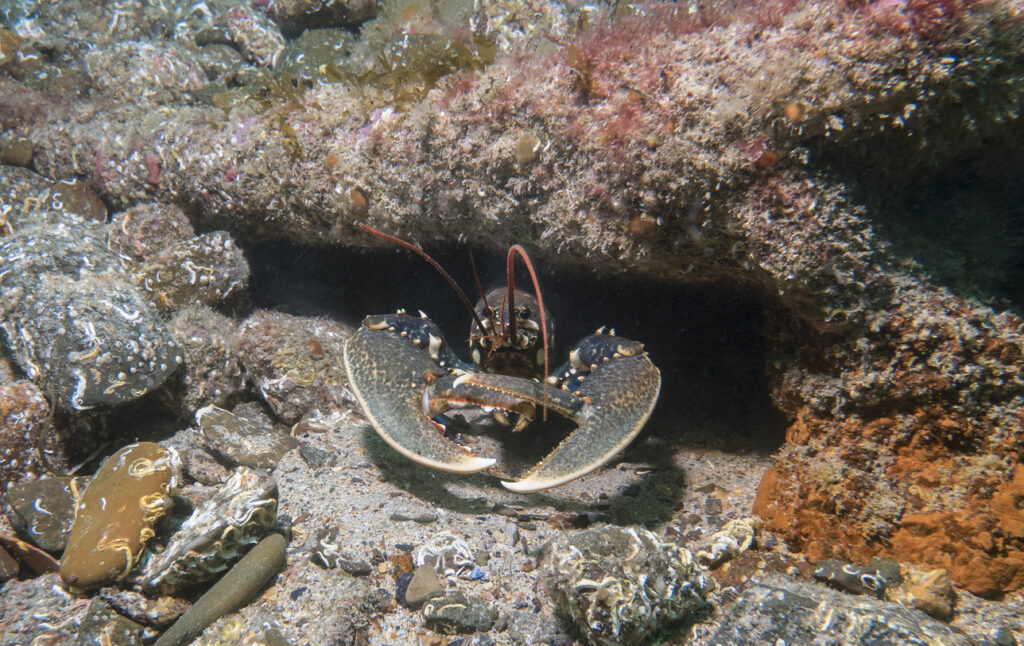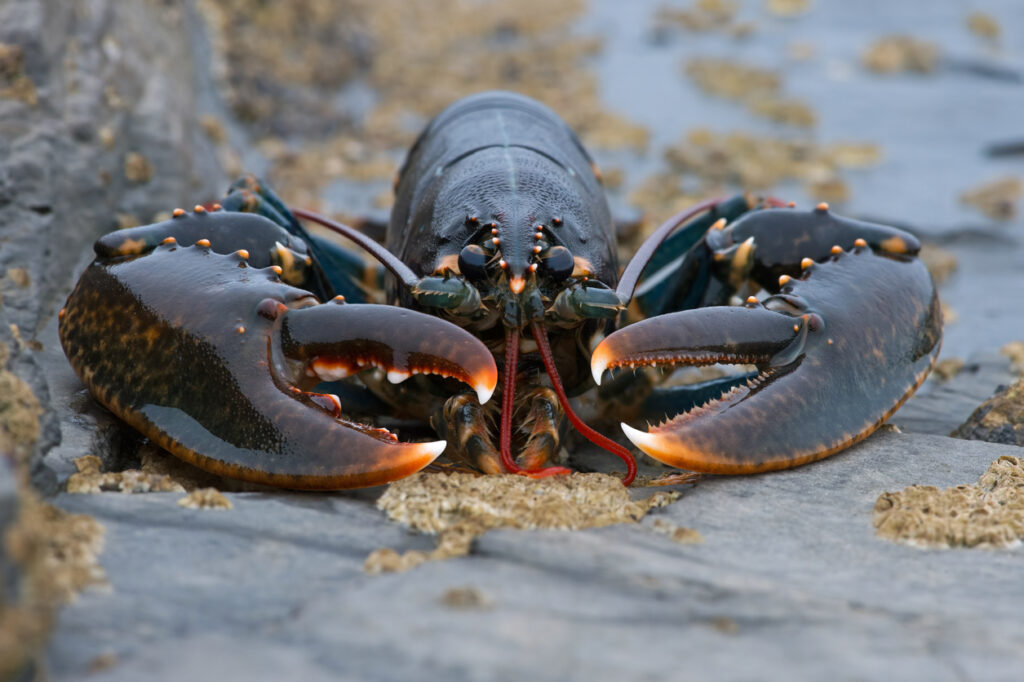Throughout the oceans, there are a wide variety of creatures that each have very unique characteristics, from fish to mammals, reptiles to molluscs, but today we’re here to explore a particularly fascinating type of aquatic animal: crustaceans.
Crustaceans are a group of animals characterised by their hard exoskeleton, seen in species such as crabs and lobster.
In this blog, we’ll have a look under their exoskeleton to find out all the fascinating facts about crustaceans.
When did crustaceans first appear?
Crustaceans are some of the oldest animals that still exist today, with fossils dating back over 500 million years! Since then, many crustaceans have remained unchanged, which really is a testament to their resilience and survivability.
Most of the crustacean fossils found in Britain are from the Jurassic period and are very similar to the types of crustaceans you’d find in British waters today.
What are the different types of crustaceans?
Despite their visual similarity, crustaceans can actually be separated into five different groups under the same family. These include:
- Branchiopoda: This group contains species like fairy shrimp, water fleas and tadpole shrimp. They are typically very small, measuring between 0.2-6mm and feed on the likes of plankton.
- Ostracoda: Known as seed shrimp, they are incredibly small and typically only measure around 1mm. There’s thousands of different species within the Ostracoda class.
- Remipedia: This is a class of blind crustaceans, with only around 20 living species. They can range in size, but are typically around 9-45mm in length and are characterised by a head and long trunk. They lack both pigmentation and eyes.
- Maxillopoda: This class of crustaceans are small, measuring on average between 0.5-2mm and include marine barnacles and copepods. They are characterised by a small abdomen with little or no appendages.
- Malacostraca: This is the class you will recognise more easily, as it includes crabs, lobsters, crayfish and more.

What are the shared characteristics of crustaceans?
As we’ve touched upon, there are a few key characteristics that differentiate crustaceans from other groups of animals. These characteristics are as follows:
Exoskeleton
All crustaceans have an exoskeleton, meaning that their skeleton is on the outside of their body. This is a great defence mechanism because they are tough on the outside, unlike fish or mammals that are easy to cut or bite into!
This exoskeleton is made up of three parts, the head, thorax and abdomen. In some species, the head and thorax are fused together.
Much like human skeletons, crustacean exoskeletons are symmetrical meaning that they look exactly the same on both sides.
Carapace
The hard shell that covers crustaceans is called carapace. This is the same material that covers arachnids and makes up a tortoise’s shell. The underside of this shell is called the plastron.
Moulting
One of the downsides to an exoskeleton is that the skeleton cannot grow with organs and other tissues. Because of this, crustaceans must shed their exoskeleton and grow a new one, a process called moulting. This process is also shared with arachnids such as spiders and scorpions.

What crustaceans can I see at Hastings Aquarium?
Now that we’ve discussed the uniqueness of crustaceans, I bet you’re excited to see some in the flesh! At Hastings Aquarium, we have plenty of crustaceans on display that would love to meet you.
Here’s a list of just a handful of them that you can look out for on your next trip.
Velvet swimming crab
The velvet swimming crab (Necora puber) is a fascinating crustacean, known for its piercing red eyes that give it the nickname “devil crab”. It is the largest of the swimming crab family and can frequently be found in British coastal waters.
Hermit crab
The brilliantly named hermit crab (Paguroidea) is known for making its home in other animal shells, usually mollusc shells, but they have been known to make use of a variety of things as long as they fit.
Common lobster
Otherwise called the European Lobster (Homarus gammarus), this lobster is blue rather than the red you might expect from a lobster. It’s usually found in warmer waters around the Mediterranean, but they also live around the British Isles too.

Cleaner shrimp
As with a lot of crustaceans, they are known for having fascinating little personalities. The cleaner shrimp (Lysmata amboinensis) is known for its interesting preferences, which includes removing dead tissue and parasites from fish, which makes up a large part of their diet.
These fascinating creatures are animals you have to experience with your own eyes to really see their unique personalities and to truly appreciate their individuality. If you’d like to see them in the flesh, book your tickets now to Hastings Aquarium.
